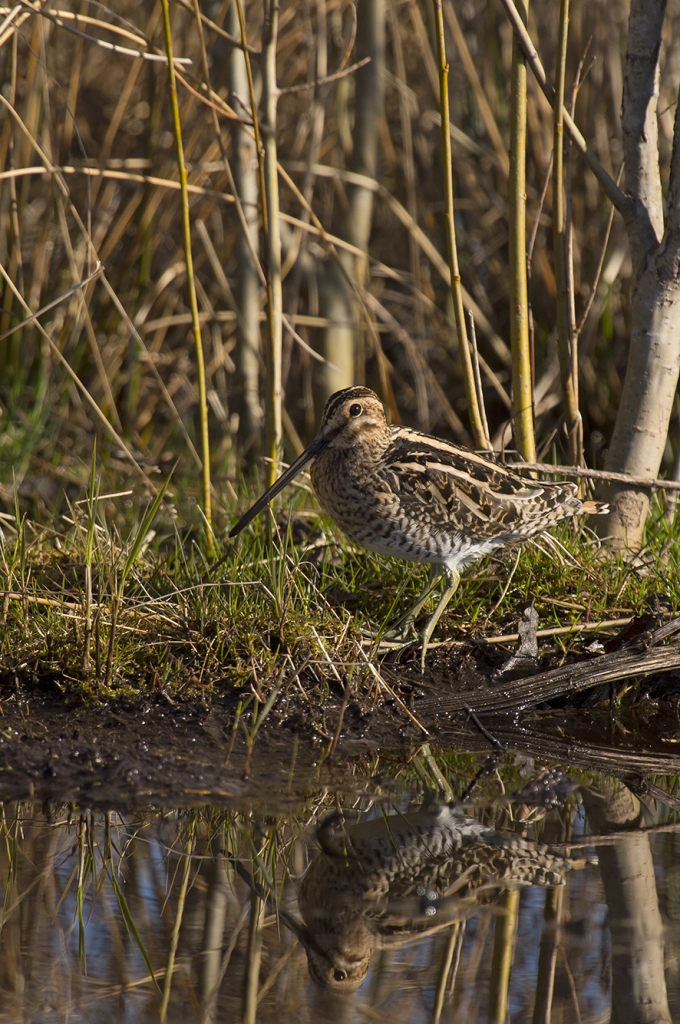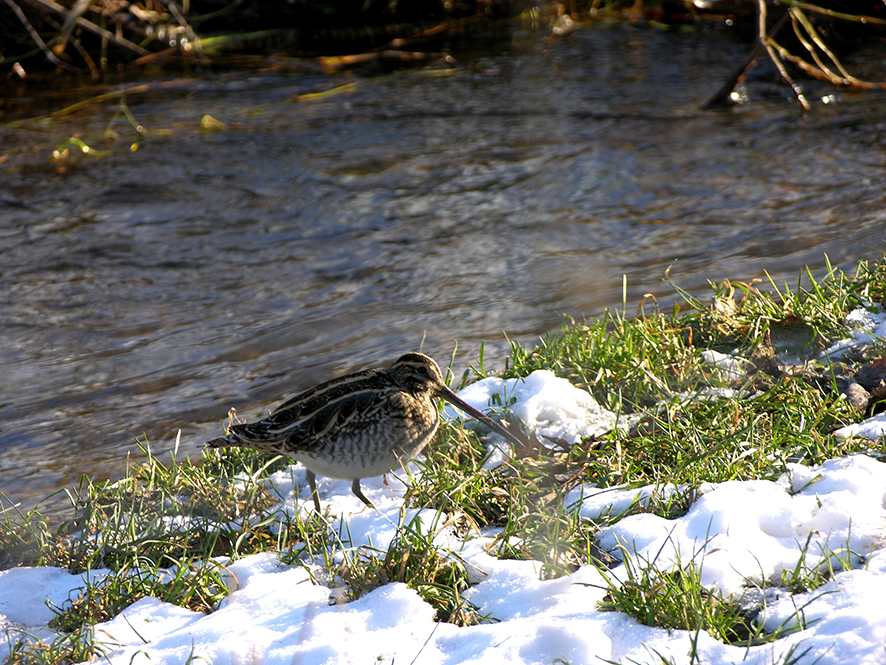The common snipe
- Horse gowk playing with its tail
If one spring day, you hear a strange humming sound above your head, it could be a ”horse gowk” or ”sky goat”. It is actually called snipe and is a sandpiper with a long beak, short legs and a brownish plumage. It spends most of the year relatively concealed and does not attract much attention to itself. In spring, however, it is something quite different. In spring the males try a special trick to attract the females' attention. When it flies, it can make its outermost tail feathers vibrate, which makes a humming sound that may sound like a horse neighing (horse gowk) or a goat that bleats (sky goat).

The common snipe’s shared children
Despite the decline in recent years, the common snipe is still a common breeding bird in Denmark. It breeds in wet meadows and bogs, where it conceals its nest well between the grass tussocks. After hatching, the male and female share the four offspring between them and bring them up separately. In the late summer, up to a million breeding birds come from Northern Scandinavia through Denmark on their journey south. Here they shed their summer coat before travelling onwards to Western Europe and North Africa. During migration, you can often see the common snipe in flooded hollows in the meadows and tidal meadows, where they are easily frightened off when they are approached.
Facts
The common snipe has a length of 27 cm and a wingspan of 37-43 cm. It has a camouflage-coloured plumage, where the head is striped in dark and light brown colours. It breeds in Russia and northern Scandinavia, especially on Iceland, and is prevalent in Denmark when it migrates to Western Europe and North Africa. Its diet consists of worms, snails, insects and crustaceans that it finds in meadows, grazing fields and along the banks of small lakes. Previously the common snipe was a plentiful Danish breeding bird, but the stock has decreased dramatically in recent years due to drainage, cultivation and overgrowing of meadows and bogs.


